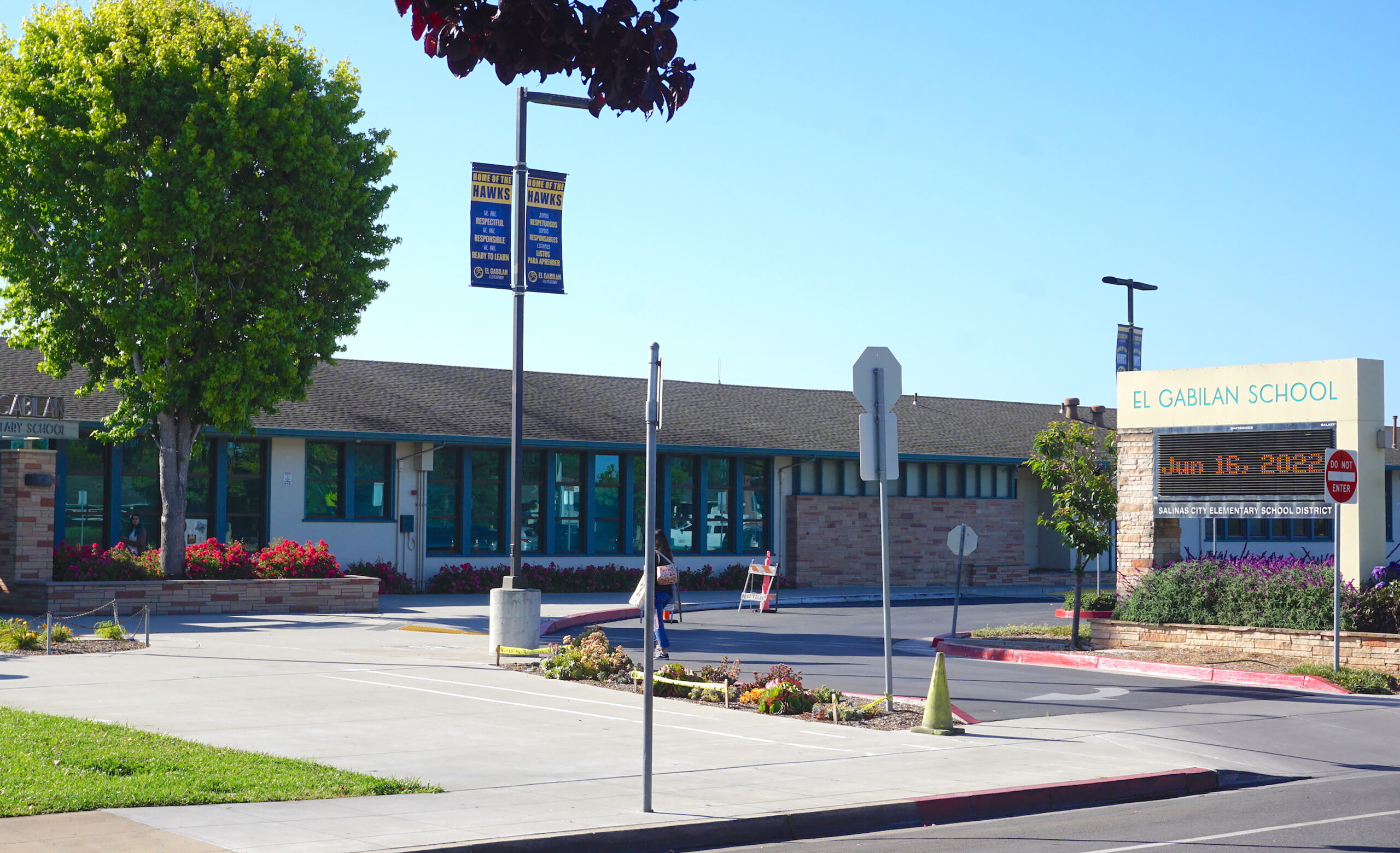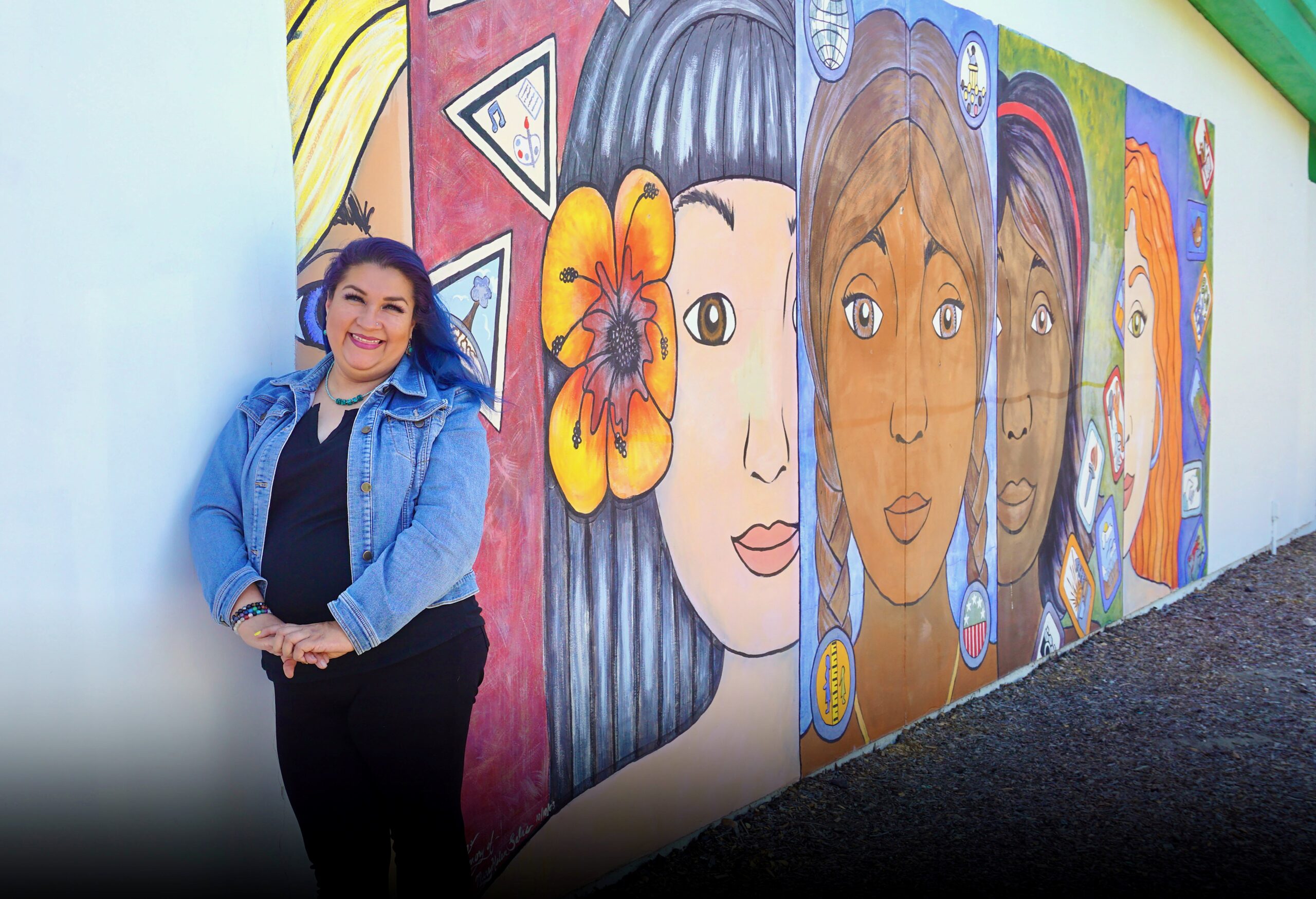| FEATURED
By Marielle Argueza
Photos by Claudia Meléndez Salinas
Uvalde, Texas, is more than 1,500 miles away from Alma Loredo’s home in Salinas. But she, like so many other parents, felt a deep sadness and concern about the safety and the resulting mental anguish caused by the mass shooting that killed 19 children and two adults in the border town.
Upon hearing the news, she remembers holding her kids and crying. “There were a lot of tears,” said Loredo, a mother of two.
The moment shook her, but it passed. As a parent organizer for Padres Unidos, an advocacy group based in Salinas, Loredo knows she is in a unique position to effect change, to make the changes needed to make schools safer. For years, she’s been helping local parents get more involved in local school accountability and advocacy. She understands that safety is built over time.
She also understands that, as scary as the mass shootings are, they remain an unlikely event. Even in states where homicide is the second leading cause of death among youth ages 2-18 years old, less than 2% of those deaths happen on campuses, or to and from school-sponsored events, according to data collected by the CDC and the School-Associated Violent Death Surveillance System from 1994-2018. Of the incidents that happened at or around schools, 90% involved a single victim. In incidents that involved multiple victims, 95% of injuries were firearm-related.
The CDC attributes the decrease in school-associated shootings to an increased awareness of youth violence as a public health issue. This means schools nationwide are doing what many Monterey County schools have been working toward — becoming more attuned to addressing things like mental health and involving the community in shaping school environments.
Enlarge

Most of Loredo’s work revolves around getting parents to participate in the Local Control Accountability Plan, or LCAP, a blueprint all public schools in California use to outline their visions, plan their goals and allocate their resources. Perhaps because of the pandemic, or because of years of ongoing conversations about the need for more social and emotional support, one the major highlights of the 2021-2022 LCAP for Alisal Unified School District is its increased funds for mental health resources for students.
“There was a real concern this year because kids hadn’t been in a classroom or around each other for a year,” she said. “There’s more money now going to those resources than ever.”
Increasing the budget around social-emotional support is important, not just in terms of helping kids adjust from sheltering in place, but also as a preventative tool. “School safety is more than just police officers on campus,” said Loredo. “It’s also about managing stress and anxiety and rethinking the roles of everyone involved in the school so kids can have a sense of trust.”
Allocating or emphasizing mental health on campuses is increasingly a greater budget priority for local schools countywide. For years, Salinas Union High School District has been planning to construct wellness centers for every campus. Two were opened in April this year, with another two scheduled for construction next year.
'School safety is more than just police officers on campus. It’s also about managing stress and anxiety and rethinking the roles of everyone involved in the school so kids can have a sense of trust.' Alma Loredo
At Salinas City Elementary School District, outreach and easy access to resources are as important as expanding services. According to El Gabilan Elementary School principal Esabel Cervantes, the use of counseling and mental health services has increased. Since the pandemic, around 50 to 60 students, representing a little over 10% of the school’s student population, now regularly make use of counseling services.
Cervantes adds that safety in schools isn’t just a knee-jerk response to emergencies or the aftermath of headline-making news. It takes time. Gabilan students go through ALICE Training (Alert, Lockdown, Inform, Counter, Evacuate), or active shooter training, and at least two lockdown drills — the required state-mandated amount. SCESD, like AUSD, has onsite counselors and a team of psychologists who work directly with the district.
Cervantes explained that there are a number of informal mental health check-ins also in place. Teachers and staff are trained to look for signs of distress and use an age-appropriate system of assessing emotions. “If a student marks themselves as red, they’re angry and frustrated,” said Cervantes. That’s when the school staff has enough evidence to trigger a response which includes counseling, program recommendations and referrals.
After Cervantes disciplines a student, there is always a follow-up conversation between herself and the on-campus counselor. “That way, they know they’re still being emotionally supported even after a mistake,” she said.
She also points out that the vast majority of the gun violence experienced by her students doesn’t happen on school grounds, but rather outside of them. “That’s the other thing with gun violence that doesn’t make it on the news,” said Cervantes.
“When it comes to mental health support, we have to look at the entire community. We will do everything we can in school and go above and beyond to support our students,” said Cervantes.
Loredo is comforted by the data that say schools remain safe places for students despite the onslaught of devastating news. Though the recent news has taken an emotional toll on Loredo and her family, she still believes schools are safe places for kids. “Let’s not normalize” school shootings, she said.
Enlarge

Claudia Meléndez Salinas
Have something to say about this story? Send us a letter.
